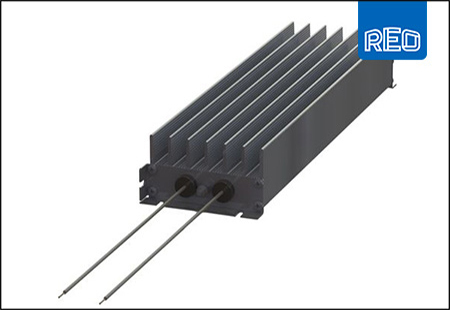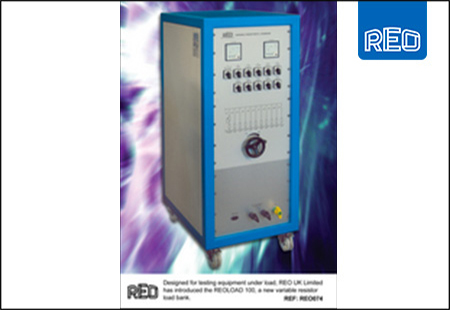Aluminium-clad brake resistor passes environmental testing to EN standards
A robust electrical braking resistor designed to improve the safety and longevity of electronic components in electric vehicles (EVs) has passed environmental testing and proven its quality to EN certification. A special version of the standard BW165 aluminium-clad braking resistor, manufactured by electrical power quality specialist REO UK, endured shock, vibration and salt mist environmental testing to prove its design and performance in challenging environments.
The tests were conducted in Germany by RST Rail System Testing in its certified environmental test laboratory in late 2018. The resistor was subject to shock and vibration testing to EN 60068 and ingress testing of the enclosure to EN 60529 standard, designed to demonstrate the performance quality and ingress protection of the unit.
The resistors were exposed to peak accelerations of 100g in three axes as part of the shock testing, which was cycled for 18 separate instances of shock according to EN 60068-2-27 (2010) standards. In addition to the standard shock testing, the units also had to endure five consecutive drops of 1000mm onto a hard surface to demonstrate durability.
Vibration tests were conducted in accordance with EN 60068-2-64 (2009), subjecting the braking resistor to more than 30 hours of vibration of 5–100 Hz in three axes, with a maximum power spectral density of 0.085 Hz.
“Braking resistors are commonly used in EVs to help safely dissipate surplus electrical loads and prevent wear and damage to electrical motor drive systems,” explained Steve Hughes, managing director of REO UK. “They play an important role in maximising the reliability of components, so you want the resistor to be as robust and reliable as possible.
“Unsurprisingly, EV components are subject to a lot of vibration during operation, so they must be able to demonstrate that they can perform under these conditions without compromising effectiveness. REO’s resistors are designed with this reliability in mind, and these results for the special version validate that. Not only do these tests show that this special resistor is ideally suited to EVs, but the salt mist testing demonstrates that it is capable of delivering results in marine environments.”
The salt mist testing saw the product exposed to a five per cent salt solution at 25 degrees Celsius for two hours. Following this, the resistor was dried out at 40 degrees Celsius for 22 hours and this test was repeated several times over the course of a week. The contact and insulation resistance of the product was then tested, and no significant changes in performance were observed.
The resistor’s enclosure is ingress protected to IP65, which means that it is protected against dust ingress and immersion. This makes it perfectly suited to applications where it could be exposed to water, either by a jet spray or at sea.
“As industries develop, the quality of the components becomes more important and manufacturers want demonstrable proof of excellence,” continued Hughes. “These tests were requested by one of our EV customers as a means of externally validating our product quality.
“New technology, whether it’s an offshore wind turbine or an EV, demands greater technical solutions and better performance. We’re increasingly finding that conventional component designs are unable to reliably perform in these new applications. Our design expertise and technical insight allow us to develop products that meet the changing needs of developing industry in a reliable, safe and future-proof way.”
Design engineers working on EV projects that require robust electrical components to ensure smooth power and reliable operation can find out more about braking resistors by calling +44 (0)1588 673 411 today.












